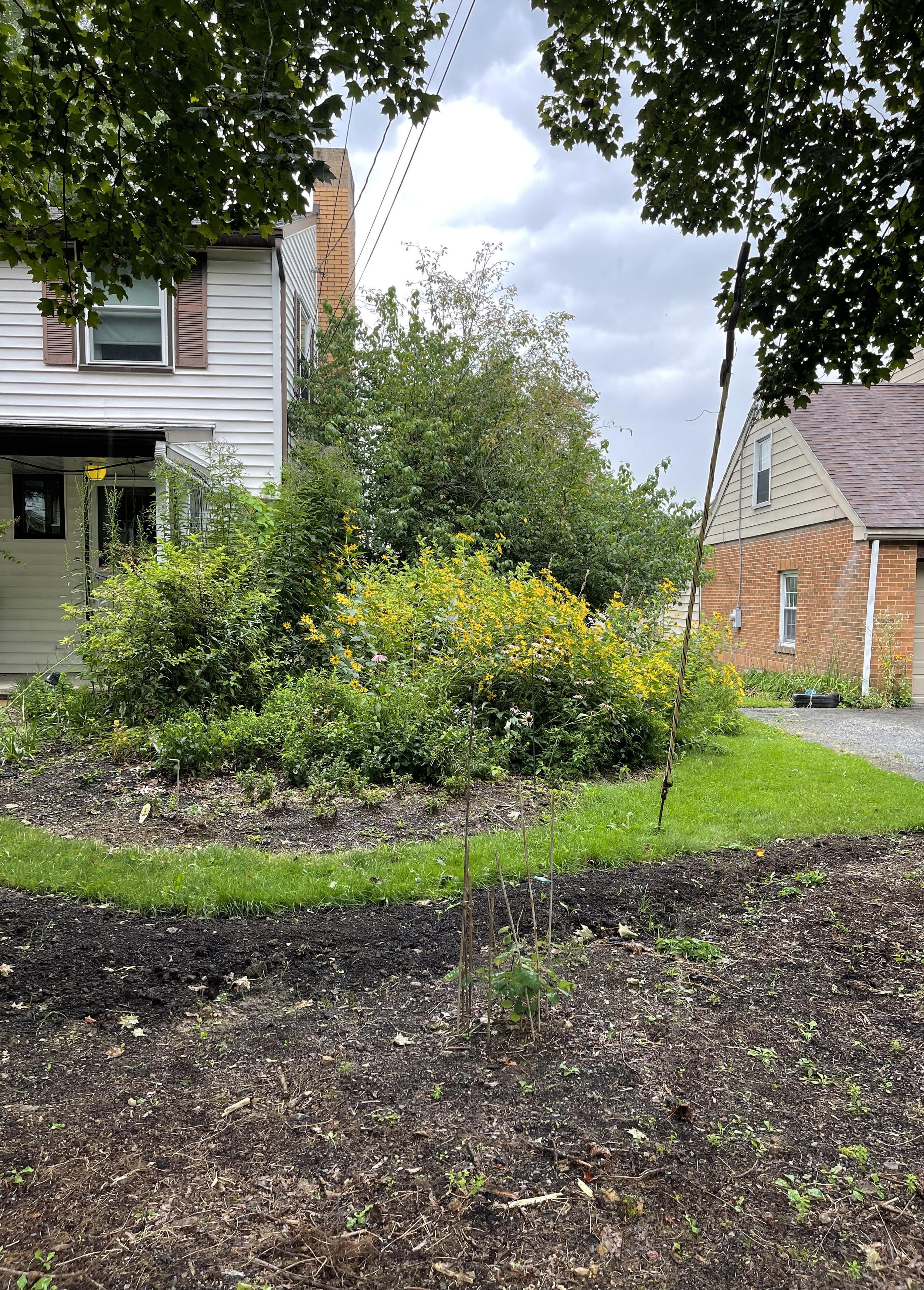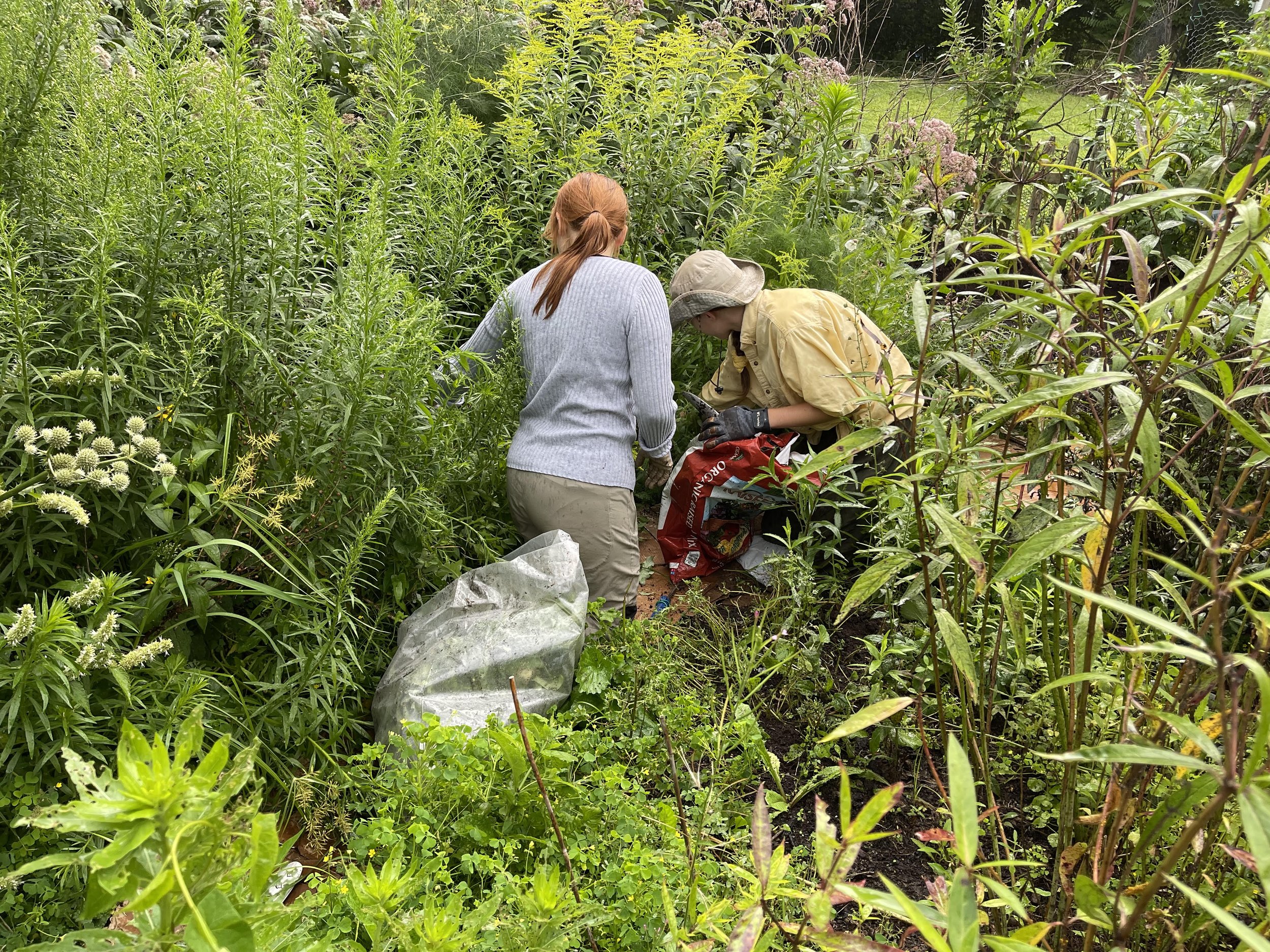Barbara Rosenberg Program and Garden Tour
Barbara Rosenberg Program
On Monday, August 14, 2023, Barbara Rosenberg, a Master Gardener from Cambria County, presented a program to our club members and guests on “Native Plant Options for Your Lawn,” on ways to transform lawns into pollinator-friendly, native plant gardens in an urban setting. Barbara is following the lead of Doug Tallamy, a University of Delaware entomologist, whose many books, starting with Bringing Nature Home stress the need for biodiversity that has been lost due to habitat destruction. One solution is to create more biodiversity in our yards by replacing some of our lawn with plants that support pollinators. Barbara has been doing this to her lawn for a number of years. She shared the successes and mistakes that she made and then led a tour of her Paulton Street gardens following the meeting. Because she was limited in the amount of time, she passed out handouts with more information.
Barbara Rosenberg Garden Tour
One way to start changing your lawn into plant beds is to lay cardboard over the grass in that area and cover the cardboard with other materials depending on the type of garden bed you want. Directions to use this technique are described on various internet sites like this one from Penn State Extension: Create New Garden Beds with Sheet Composting and Sheet Mulching (psu.edu).
In the first photo, Barbara is describing her plantings in the front of the house to two of the club members on the tour, Bob Wilkey and Tiffany Taha while the other photo gives a view of the same area from the front.
On the right side of the house, Barbara pointed out a mistake she made. She thought that the oxeye sunflowers she planted there could be trained to keep a shorter profile. A close up view of the plant, though, shows a healthy pollinator plant even though it is a bit taller than what she wanted.
This is a redbud volunteer or sapling. It is shown in the foreground of one of the pictures above. Barbara told us if you gather three or four of these and plant them together, you have a redbud bush!
On the left side of the house, Barbara pointed out her scarlet runner beans. This plant is native to the mountains of Mexico and Central America rather than eastern North America. She stressed that even though she promotes plants native to our area, she still has some favorites that are not. The flowers of this plant are highly attractive to pollinators, especially hummingbirds and bees. She has herbs planted that are not in view since it was originally intended as a place to plant her cooking herbs.
A little farther on the path to the back of her yard, she pointed out that scientists have changed our planting zone from 5b to 6a. She believes that she has a zone 7 in one small area since she is able to grow fuchsias. The flower of this plant is pictured below.
As you enter the back of the house, the gardens encircle the whole area, except for the area that is kept as lawn for her grandchildren’s play area. To the right of this area, a number of natives, such as coneflowers and brown-eyed Susan’s, are in bloom. Barbara has two environmental studies helpers from Penn Highlands Community College that come on a regular basis to do a variety of tasks. They were working in the gardens during our visit.
Barbara led us to the back of her property. On the path to the rear of the garden, natives like great blue lobelia and cardinal flower were seen. Then Barbara pointed out a large cluster of purpletop vervain, a native to South America that attracts butterflies and bees. Another non-native favorite of Barbara’s are the yellow and orange cosmos shown below.
Standing very tall is a common sunflower and hanging at a lower level was a goldenrod flower.
If You Only Add One Native Plant to Your Yard, Make it Goldenrod! Keystone plant species are what native plant guru Doug Tallamy calls in his book Nature’s Best Hope “the backbone of local ecosystems, particularly in terms of producing food that feed insects.” Most importantly, “landscapes that do not contain one or more species from keystone genera will have failed food webs, even if the diversity of other plants is very high.” This means no matter how many native plants you have in your yard, if you don’t plant keystone plants, your yard won’t be a successful wildlife habitat. Solidago (goldenrod) is at the top of Doug Tallamy’s list of essential plants.
Goldenrod (Solidago) is Trending (nurturenativenature.com)
Monarchs and Milkweed
Barbara raises monarch butterflies, from egg to caterpillar to chrysalis to adult. Milkweed leaves are a necessary part of their lifecycle. Monarchs lay their eggs only on milkweed plants. The very first meal the caterpillar consumes is its own egg case, and then begins to feed on the milkweed leaves. As Barbara says, “When raising monarchs, holes in the leaves are good. “
Monarch butterfly caterpillars are seen in both of these pictures eating milkweed leaves. The 2nd picture shows two different sizes of the caterpillars.
In the white, zippered, netted cage, the outline of the crysalises are seen attached to the top of the white netting. The other picture shows an adult cage. Inside the netting are adult monarch butterflies and a variety of native plants along with the necessary milkweed plants. Monarchs go through multiple generations. The eggs are laid on the milkweed plants inside this cage and the cycle begins again.
For more information on monarch life cycle and multiple generations:
The Life Cycle of a Monarch Butterfly - International Butterfly Breeders Association
Two other interesting aspects of her property are a rain garden and a mini-hydroponics tank. Barbara noted that the rain garden gathers water that would normally go into the gutters and returns it to the below ground aquifers where it belongs.
The Home and Garden Information Center from Clemson Cooperative Extensive describes it this way: Rain gardens are “depression gardens” – designed and located to receive runoff from a roof, driveway, or lawn; these features work with nature to collect, filter, and infiltrate runoff, while showing off a variety of vibrant, colorful, and low-maintenance plants. Two US plants native to our area, Joe Pye weed, with its pink/purple flowers and button bush,with its distinctive ball-shaped flowers are pictured below.
In her mini-hydroponics, cut chrysanthemum cuttings and another plant are propogated. Ice cube trays in a plastic container with a regular fish tank pump below serves the purpose.
























